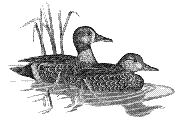US Fish & Wildlife Service
Date of this Version
January 1992
Abstract
Shorebirds have always relied on the extensive network of natural wetlands from Texas to North Dakota. This network has now been fractured by wetland drainage and agriculture to the point where suitable wetlands are absent in much of the Midwest. Habitat loss and the resulting risk of population decline highlight the importance of management of shorebirds on refuges, hunting clubs, and preserves for both breeding and migrating species.
Because shorebirds, like waterfowl, depend on wetlands throughout the year, the loss of natural wetlands in the Midwest poses a real threat. Unfortunately, shorebirds are slow to recover from population declines caused by human disturbance; for example, the Eskimo curlew has never recovered from being over-hunted at the turn of the century. Many species, particularly those that nest in the lower 48 states, have declined in this century because of habitat loss. Arctic nesting species are relatively safe in remote breeding grounds, but are vulnerable to degradation of habitats critical to migration through the Midwest.
This chapter provides guidance for wetland managers in midwestern states for attracting migrating and breeding shorebirds. These suggestions will benefit most of the 40 species that migrate or breed in 12 states of the mid-continent region: Illinois, Indiana, Iowa, Kansas, Michigan, Minnesota, Missouri, Nebraska, North Dakota, Ohio, South Dakota, and Wisconsin (Table). Emphasis is on migrating species because they can benefit the most from the kind of managed wetland habitat usually available on mid-continent refuges. The unique value of managed wetlands is their capacity to buffer the effects of both drought and flooding in surrounding wetland habitat.


Comments
Published in Diana H. Cross and Paul Vohs (eds.) Waterfowl Management Handbook. Fort Collins, CO: U.S. Fish and Wildlife Service, 1988. Online at http://www.nwrc.usgs.gov/wdb/pub/wmh/contents.html